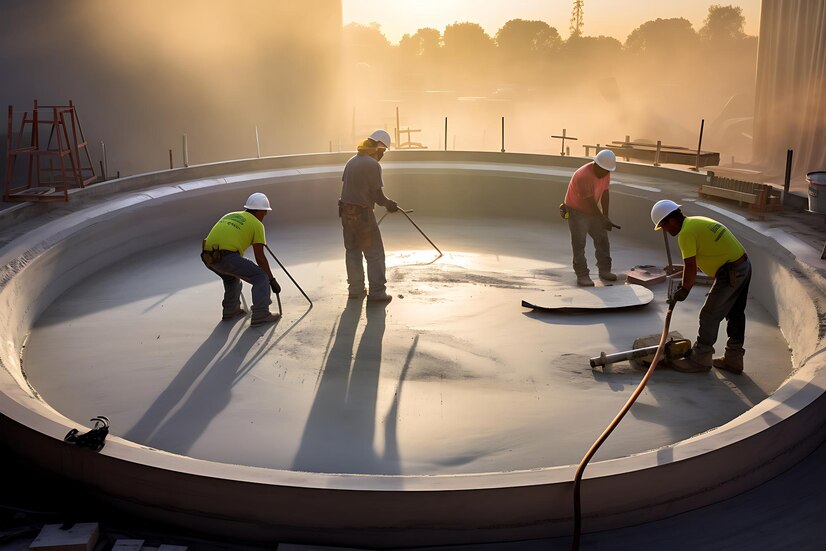If you want your pool to look classy and have a durable finish, consider plastering it. However, you must understand the process before diving in.
The pool must be acid-washed, apply a bond coat, and then plastered. A specialized start-up product will also be needed to minimize plaster dusting.
Acid Wash
After draining your pool, sanding, and chipping away all blemishes, it is time to acid wash. This step is essential before applying a bond coat and pool plastering. A mistake during this step could result in the new plaster etching, crazing, or shading.
Acid washing also burns off any calcium that has built up on the surface of the plaster. This calcium can form an ugly film that makes the surface rough. Rough surfaces are uncomfortable to walk on and can snag or tear bathing suits. They are also much more challenging to clean and can harbor algae.
When preparing your acid wash solution, use a ratio of 8 to 12 parts water to 1 part muriatic acid. When using acid, working in small, manageable segments is essential to avoid chemical burns and prevent the mixture from boiling. Adding water to the acid helps control the amount of heat generated.
Bond Coat
If your pool’s surface feels rough and bumpy, or you can see the “shell” materials peeking through in spots, it’s time for a replaster. Patching is not only a temporary solution but downright unsightly.
A specialized bond coating material is applied after draining the pool, scrubbing and brushing it, and sanding down any rough areas. It is called Bond Kote, which helps ensure the new plaster adheres to the existing pool plaster.
Contractors who use “homebrew” bond coats (essentially glue with other components added) do not guarantee the finish will last, as they are not designed for underwater applications and may delaminate in the future. Suppose you use a bond coat, following the manufacturer’s instructions. It is best. For example, the bond coat should be mixed in a specific way so that it is not too thick or too thin. It should be sprayed evenly over the entire surface of your pool.
Plaster
Preparing the pool shell for plastering requires work, which is acid washed, and the bond coat applied before a new plaster can be put on the surface isn’t replastered in time; it can become rough to the touch and allow shell materials to peek through. It can lead to problems like etching, crazing shading, and even water loss due to leaks.
During plastering, it is also an excellent time to search for and fix any pool leaks. If they are set later, the leaks will eventually ruin the finish.
Pool plaster is the traditional surface choice for pools, but aggregate and tile options are also available. They are more expensive but offer a more durable finish. However, the underlying issue that all finishes share is water chemistry. The wrong water chemistry will wreak havoc on the surfaces and can cause stains, pitting, and discoloration that won’t go away.
Paint
Pool plaster can be painted in a variety of colors. The paint helps protect the plaster surface from algae, sun damage, and other environmental issues. It also makes the pool more aesthetically pleasing.
Painting the surface of your pool can be a great way to give it a new, more modern look or match the existing color scheme. A pool that has been painted is easier to maintain than a plaster surface.
Replastering your pool involves several steps and requires tools you may need to become more familiar with. It would help if you refrained from attempting it on your own. It’s like bandaging a cut without first stitching it.
While you may have a few alternatives to replastering your pool, they are temporary fixes and cost much more than replastering. They also don’t look as nice as a freshly plastered pool. Brushing the pool often can help prevent organic stains from occurring on the plaster surface, but this is not a permanent solution.











